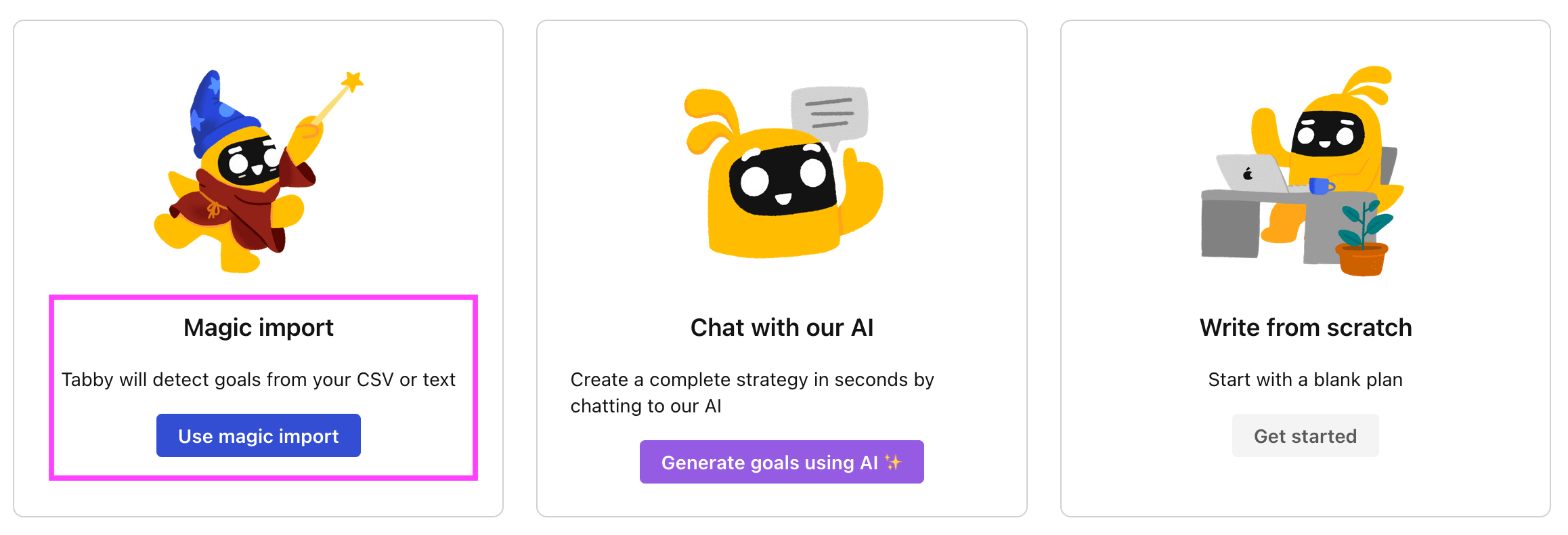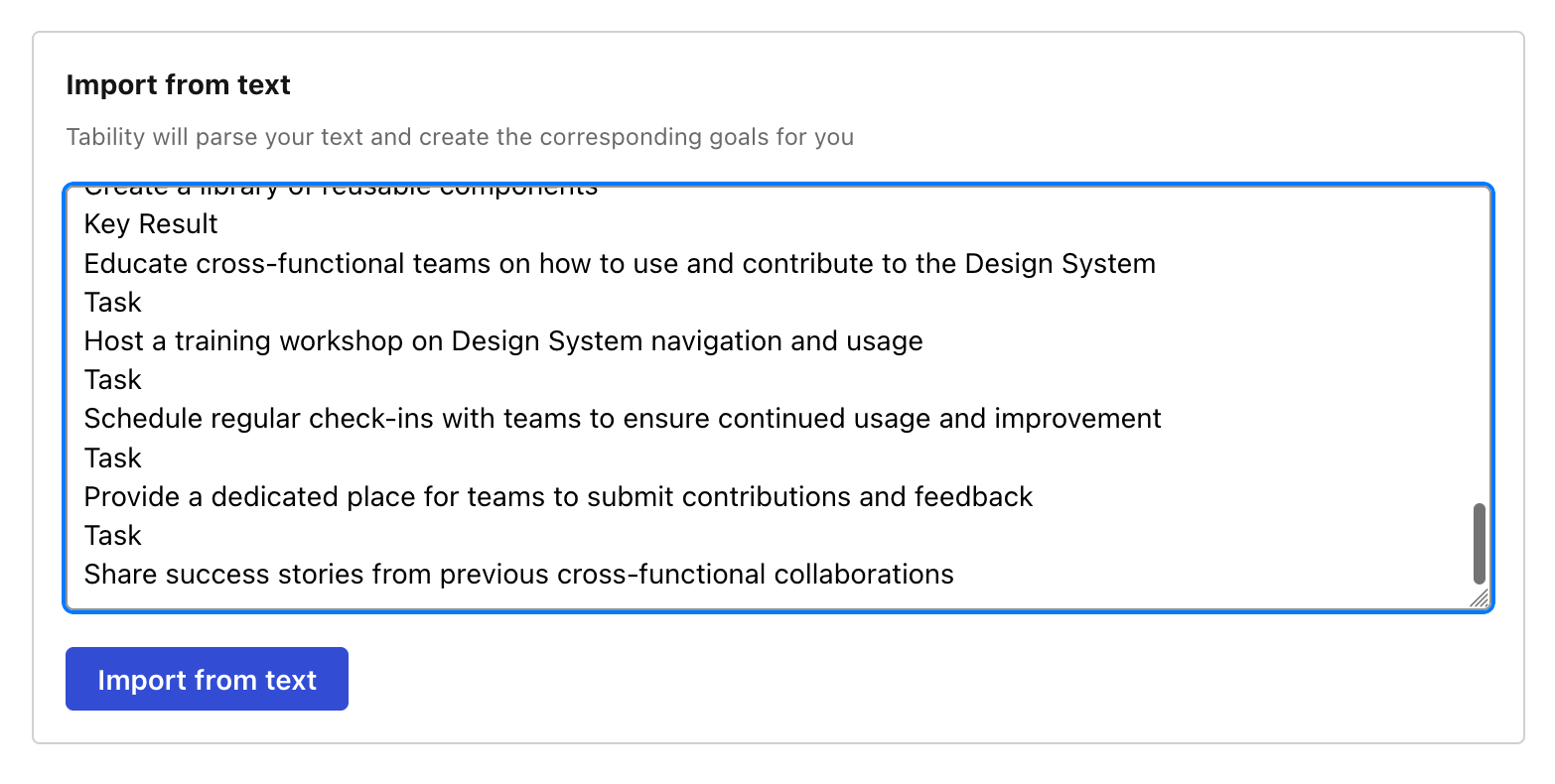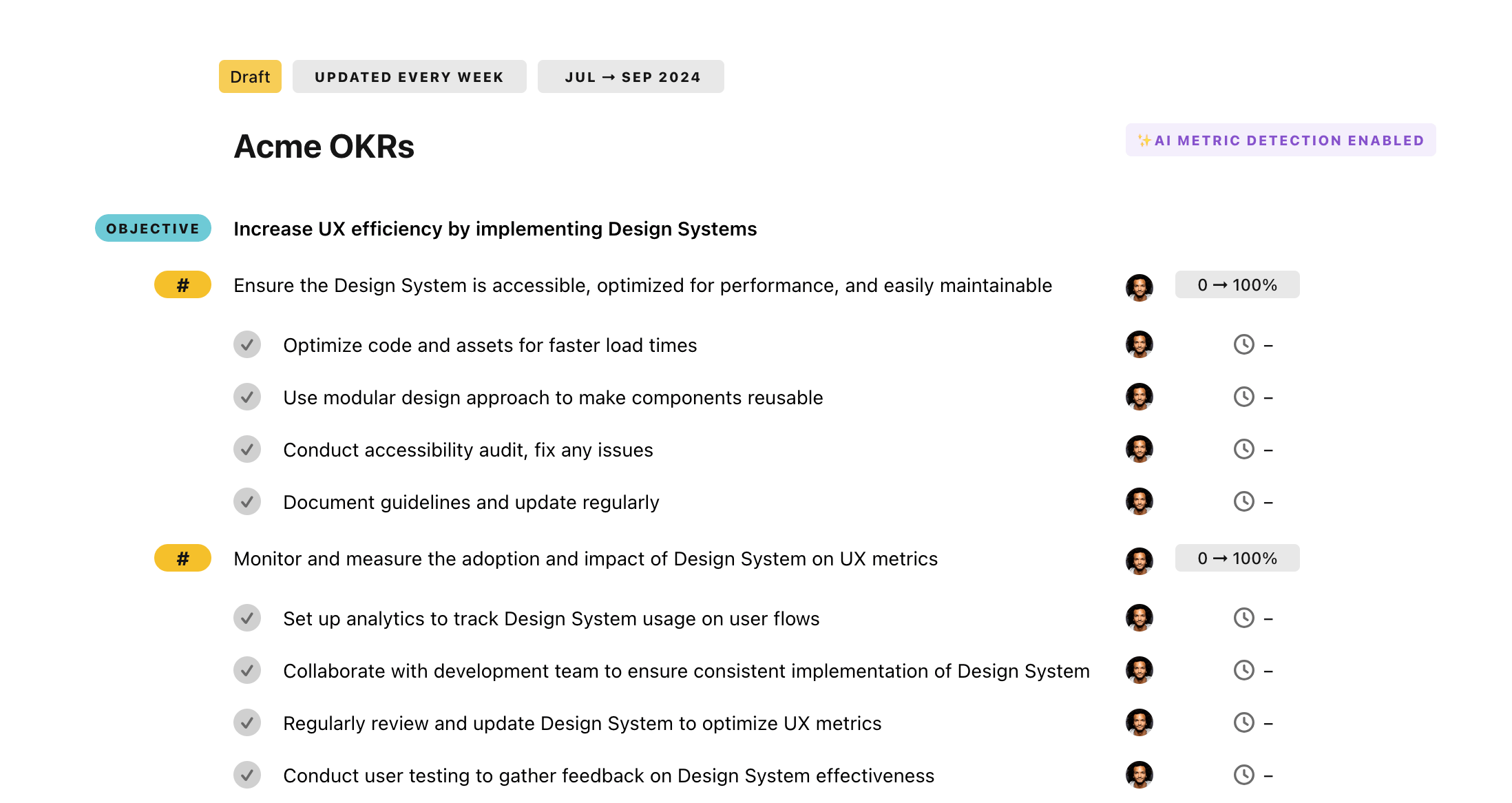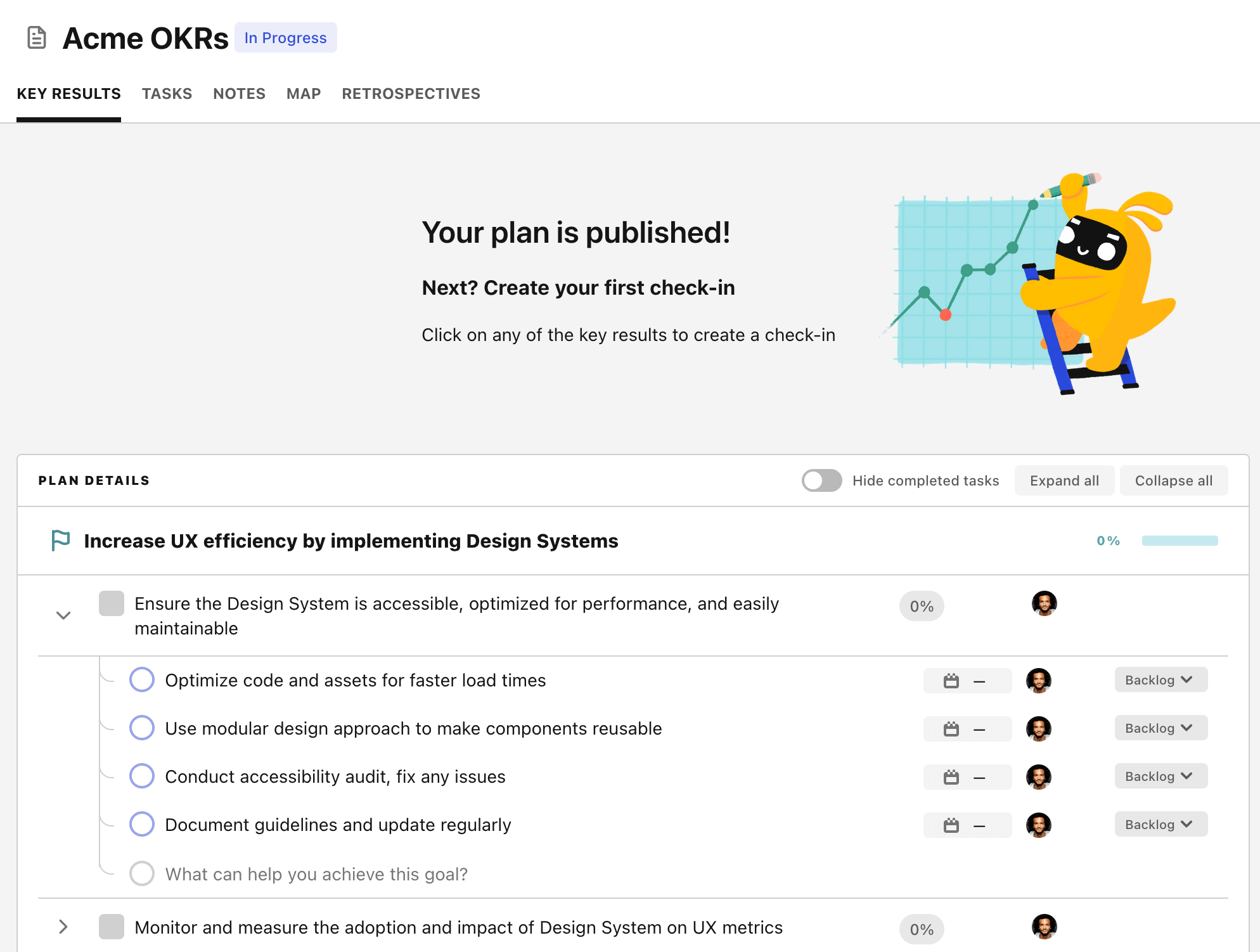OKR template to boost efficiency in maintenance jobsv
Your OKR template
The second objective aims to reduce repeat maintenance jobs by 15%. This aims to be achieved by enhancing job protocols. Initiatives include training staff in upgraded procedures, developing comprehensive and improved job protocols, regularly monitoring and measuring the effectiveness of maintenance jobs.
The third objective emphasizes the implementation and optimization of job tracking to improve efficiency and accountability. The planned initiatives for this objective are developing an efficient, comprehensive job tracking system, training employees on how to use this tracking tool and regularly assessing and making any necessary adjustments for optimal results.
Overall, the objective of this OKR is to improve efficiency in maintenance jobs, primarily by improving worker skills, reducing repetitive jobs and enhancing job tracking. The initiatives reflect a variety of strategies to meet these objectives, from training and development to system implementation and optimization.
ObjectiveBoost efficiency in maintenance jobsv
KRAchieve 75% first-time-fix rate by developing staff troubleshooting skills
Foster regular role-play exercises for troubleshooting
Implement a comprehensive skill development program
Evaluate and provide feedback on each staff's performance
KRReduce repeat maintenance jobs by 15% through enhanced job protocols
Train staff in upgraded procedures
Develop comprehensive, enhanced job protocols
Monitor and measure maintenance effectiveness regularly
KRImplement and optimize job tracking to improve accountability and efficiency
Develop a comprehensive and efficient job tracking system
Train employees on tracking tool usage
Regularly assess and tweak for optimal results
How to edit and track OKRs with Tability
You'll probably want to edit the examples in this post, and Tability is the perfect tool for it.
Tability is an AI-powered platform that helps teams set better goals, monitor execution, and get help to achieve their objectives faster.
With Tability you can:
- Use AI to draft a complete set of OKRs in seconds
- Connect your OKRs and team goals to your project
- Automate reporting with integrations and built-in dashboard
Instead of having to copy the content of the OKR examples in a doc or spreadsheet, you can use Tability’s magic importer to start using any of the examples in this page.
The import process can be done in seconds, allowing you to edit OKRs directly in a platform that knows how to manage and track goals.
Step 1. Sign up for a free Tability account
Go tohttps://tability.app/signup and create your account (it's free!)
Step 2. Create a plan
Follow the steps after your onboarding to create your first plan, you should get to a page that looks like the picture below.

Step 3. Use the magic importer
Click on Use magic import to open up the Magic Import modal.
Now, go back to the OKR examples, and click on Copy on the example that you’d like to use.

Paste the content in the text import section. Don’t worry about the formatting, Tability’s AI will be able to parse it!

Now, just click on Import from text and let the magic happen.

Once your example is in the plan editor, you will be able to:
- Edit the objectives, key results, and tasks
- Click on the target 0 → 100% to set better target
- Use the tips and the AI to refine your goals
Step 4. Publish your plan
Once you’re done editing, you can publish your plan to switch to the goal-tracking mode.

From there you will have access to all the features that will help you and your team save hours with OKR reporting.
- 10+ built-in dashboards to visualise progress on your goals
- Weekly reminders, data connectors, and smart notifications
- 9 views to map OKRs to strategic projects
- Strategy map to align teams at scale